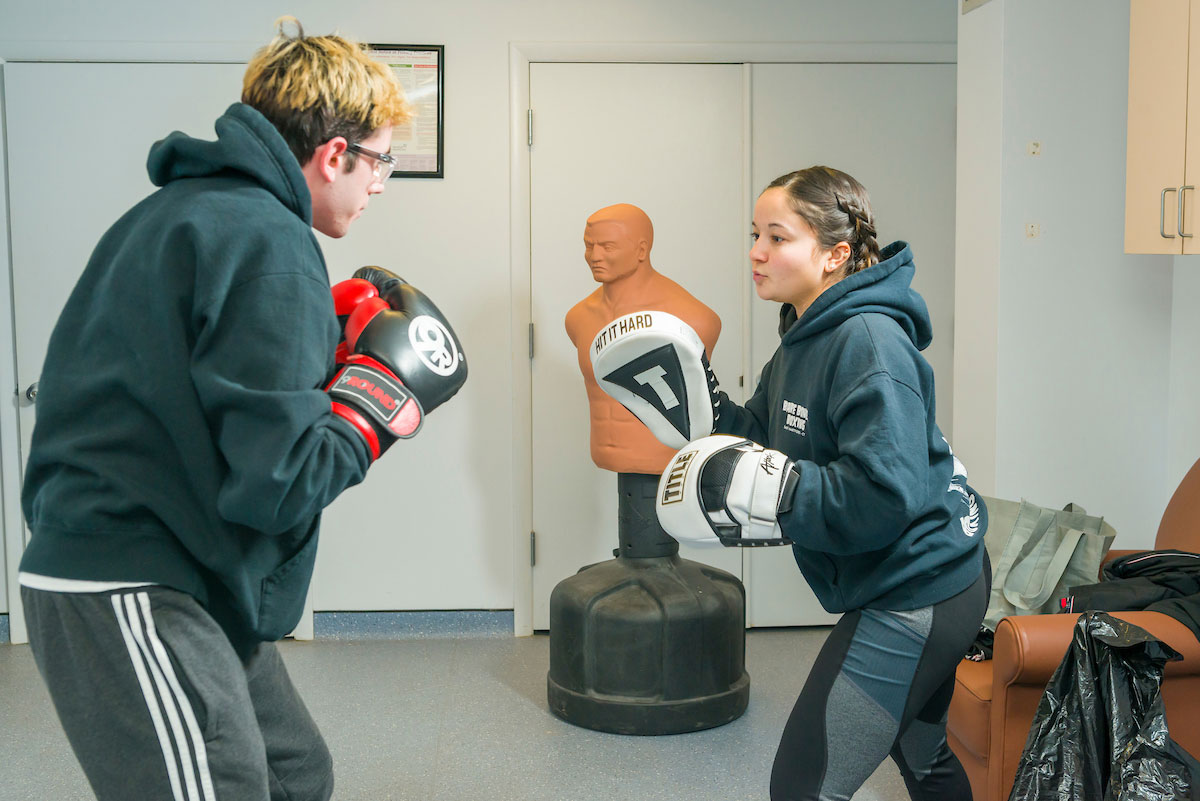He stood quietly, watching the others throw punches that sometimes missed the mark. Then Michael, his eyes intent behind roundish glasses, stepped forward and launched a series of solid punches, first at the instructor’s outstretched training mitts and then to the jaw of a sparring dummy.
Uppercut. Thwack!
Jab. Thwack!
Bob, weave, right cross. Thwack!
Only when the instructor said to stop did Michael — a slim man in a gray turtleneck, sweatpants and a large crystal pendant on a leather necklace — smile shyly, his eyes crinkling at the corners as he stepped back into the semicircle.
It was a typical Tuesday afternoon in the boxing class organized by Marilyn Finkelstein, a licensed clinical social worker, as part of the Young Adult Dual Diagnosis Program at the Institute of Living (IOL). The Program offers a variety of healthy activities designed to help clients age 18 to 26 maintain their sobriety and mental health.
“I box and I know it’s a good outlet for recovery,” Finkelstein said. “It’s good for them to learn different coping skills to deal with anxiety, anger or frustration. It’s a way to cope as opposed to picking up a drug or drink.”
Clients in this program are all diagnosed with both substance abuse and some form of mental illness. While Michael declined to talk about his diagnosis, he said he wanted to try the boxing class to explore a new way to be physically active and stay sober.
“I think it will help me, give me something new to help myself and get out of my head,” he said. “It’s a good, sober way to have fun.”
Raquan Byrdsong of Hartford agreed. In recovery after smoking pot and crack, the 23-year-old said he needs ways to keep his mind off of using.
“I’m focused on my recovery and this makes me think that maybe boxing could be part of my recovery,” Byrdsong said. “It’s something different, something I’d never done before.”
The class is run every two weeks at the IOL by Rianna Travaglini, an instructor and manager at Bare Bones Boxing in East Hartford. Each time, she walks the participants through basics like properly wrapping their wrists to the importance of protecting themselves by keeping one hand in front of their face at all times.
She tempered the class with gentle corrections and encouragement. As Byrdsong pursed his lips in concentration before launching a long arm and glove in an upper cut, for example, she slowed him down.
“Bend your knees and keep your arm going right up through the chin,” she suggested, demonstrating. “Your power comes from your legs.”
In the end, she said boxing is about empowerment and taking control, something that echoes the mantras at the IOL.
“It’s a really good workout and hopefully a confidence boost for people,” Travaglini said.
For more information on support offered through the Institute of Living’s Young Adult Dual Diagnosis Program, click here.

